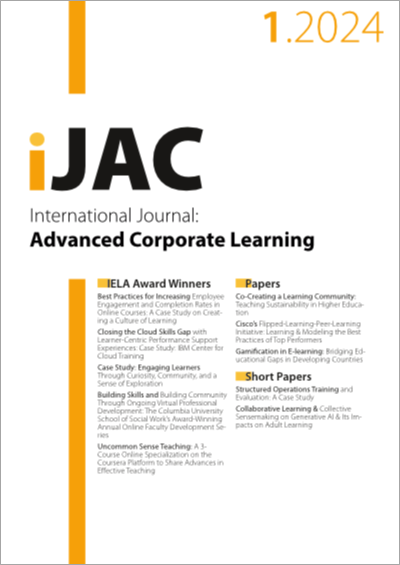Cisco’s Flipped-Learning-Peer-Learning Initiative
Learning & Modeling the Best Practices of Top Performers
DOI:
https://doi.org/10.3991/ijac.v17i1.42107Keywords:
Flipped learning, Kirkpatrick Model, Knowledge sharing, Peer learning, Self-directed learningAbstract
This paper presents a new learning initiative that Cisco plans to roll out for its community of salespeople in collaboration with researchers from the National University of Singapore. Unlike Cisco’s existing sales training programs, this initiative adopts a bottom-up approach for the purpose of capturing and leveraging the “wisdom in the crowd” that is unique to Cisco’s products, services, processes, and markets. Specifically, learning content will be sourced from selected members of Cisco’s sales community who have been identified as subject matter experts (SMEs) in some aspect of the sales pipeline. Content created by the SMEs will typically take the form of a short video that codifies their best practices but may include some other material. To support learners consume and internalize the learning content at scale, a stratified learning model comprising two active learning approaches is used—namely, flipped learning and peer learning. The model provides learners with opportunities for self-direction. For example, learners get to choose what and how to learn. Machine learning will be used to automate various processes, including SME identification, generating personalized content recommendations, and pairing learners with peer learning partners. The efficacy of this new learning initiative will be measured in terms of its impact on individual sales productivity, using an adaptation of the New World Kirkpatrick Model, a recent iteration of the industry standard for measuring corporate learning success.
Downloads
Published
How to Cite
Issue
Section
License
Copyright (c) 2024 Marc Andre Armand, Alberto Corrias

This work is licensed under a Creative Commons Attribution 4.0 International License.



